Ask any tourism expert and they’ll tell you that experiencing something that is both luxurious and also ecologically sustainable is big business.
You only need search for weekend getaway accommodation and you’ll find you’re bombarded with eco-friendly options that are designed to make you feel like you’re lessening your impact on the environment.
The same can be said for some cars, too. Take the Porsche Cayenne S E-Hybrid and the Range Rover Sport Hybrid we’ve got here.
Both are from prestigious brands that are chasing new ways to lower their respective average fleet emissions, but neither is designed to feel austere in any way, shape or form.
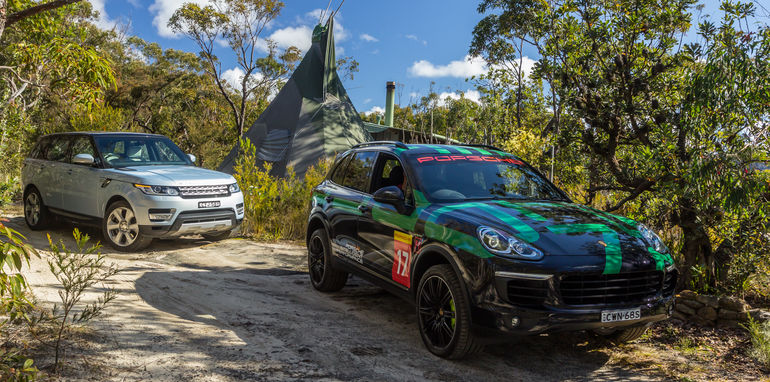
Yes, you’re absolutely right â€" once upon a time large SUVs like these were considered part of the problem, not part of the solution. They were gas-guzzling vehicles for buyers who had no social conscious.
But these two high-end high-riders are new age, thoughtful vehicles, aimed at similar types of consumer.
The Porsche Cayenne plug-in hybrid is a greenie’s wet dream â€" it allows you to charge from your home solar array, or from the wind farms and hydroelectric schemes that your electricity company charges you the privilege of accessing through carbon offset payments.
The Range Rover Sport Hybrid isn’t quite the same shade of green â€" it uses a diesel-electric hybrid drivetrain but it can still run on electricity alone for short distances.
We headed out to the green, eco-conscious Blue Mountains â€" to a wilderness retreat, no less â€" to see which of these green models argues a stronger case.
Pricing and specifications
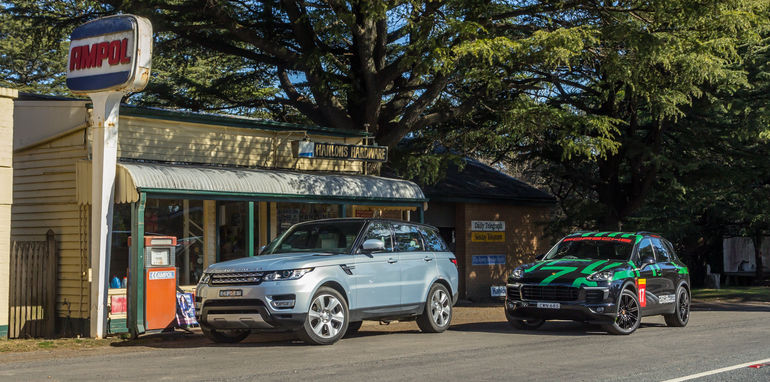
Much like adding the carbon offset to your airline ticket, decreasing emissions from a luxury SUV comes at a cost.
The Porsche Cayenne S E-Hybrid, for example, starts from $140,800 plus on-road costs, which is a staggering $34,700 more than the entry-level diesel model that Trent tested recently.
However, the car tested here â€" with its mad livery that Porsche Australia denied us the opportunity to peel off â€" is a sight dearer with all of its options considered: $158,090.
The options fitted include 21-inch wheels with wheel-arch extensions ($5610), stainless steel sill guards ($1980), a Sport Chrono package ($1890), soft-close doors ($1790), brushed aluminium interior finishes ($1750), black roof rails ($1390), a panoramic roof ($1190), a logo on centre console armrest ($750), Porsche crests embossed on head rests ($490) and a monochrome black exterior pack ($450).
Standard equipment for both models includes 20-inch alloys, power-adjustable front seats, satellite-navigation, Bluetooth phone and audio streaming, USB inputs, a reverse-view camera and parking sensors.
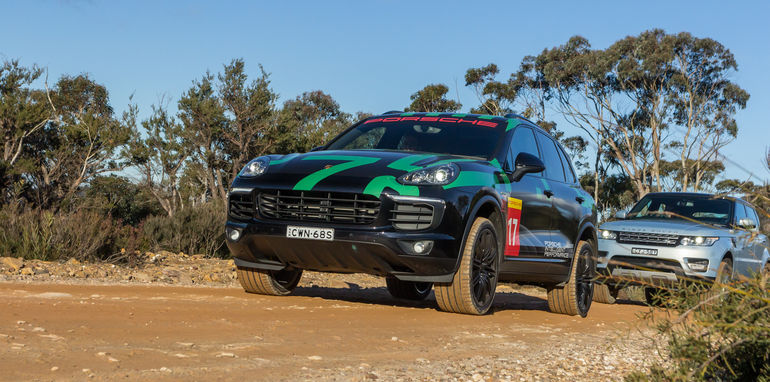
Porsche offers standard metallic paint, an electric sunroof, heated front seats and the Porsche Dynamic Light System (PDLS) with bi-xenon headlights.
The Range Rover Hybrid we had was the HSE version (there’s also the better-equipped Autobiography version). It has a 12.3-inch TFT instrument cluster and xenon headlamps with auto high-beam, but notably lacks seat heating.
Our Range Rover Sport Hybrid came in at $146,900 plus on-road costs, which is $56,000 more than the entry-level diesel model in that range.
With all the options on our car, that price leapt to $163,450.
They include the Audio Visual Pack with digital television reception and dual-view touch-screen that allows the front passenger to watch while the driver keeps their eyes on the road ($3870), a Meridian sound system with 19 speakers ($2900), metallic paint ($2100) with the Santorini black contrast roof paint ($1400), a surround-view camera system ($1800), DAB digital radio reception ($900), different head-liner trim ($880), cooled front centre console ($800), and twin sunvisors ($150).
So it’s clear, both come with some decent standard goodies, but neither stand out as exceptional value.
Interior
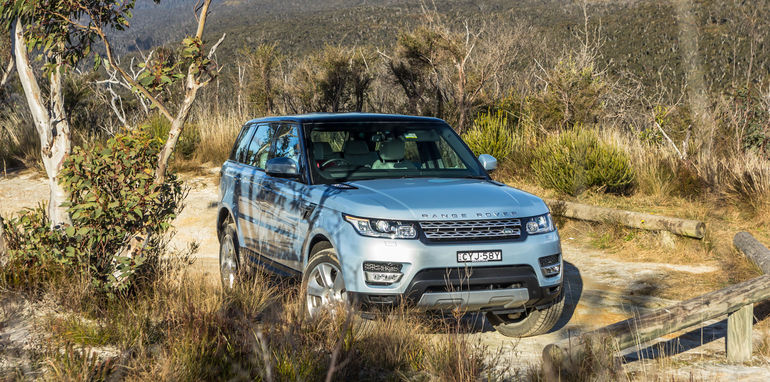
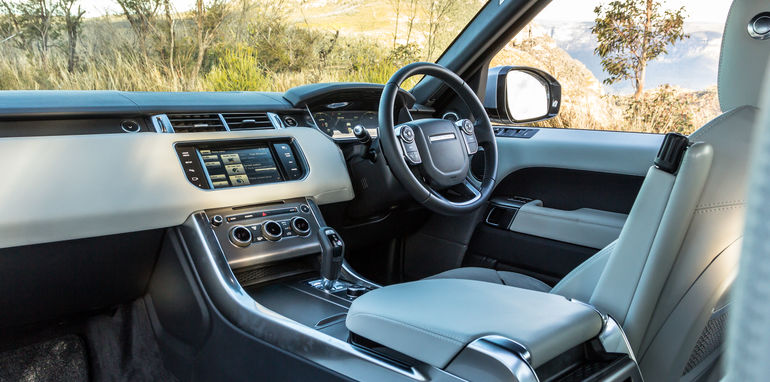
These two vehicles may have distinctly different shapes, but their overall sizes are very close.
The Range Rover Sport isn’t as long as the Porsche (4850mm versus 4855mm), but it is wider (2073mm versus 1939mm) and taller (1780mm versus 1705mm), and it also rides on a longer wheelbase (2923mm versus 2895mm).
As such, it’s no surprise that the boxier profile of the Range Rover Sport affords more space in its cabin, and it feels decidedly more airy and considerably more focused on luxuriousness, rather than outright sportiness as is the case with the Porsche Cayenne.
Indeed, if we had to characterise these two cabins in one word, the Porsche would be ‘sporty’ and the Rangie would be ‘luxury’.
The cabin of the Range Rover Sport â€" in the case of our test car at least â€" is a light, airy feeling place with lots of eye-catching materials finished in creamy hues.
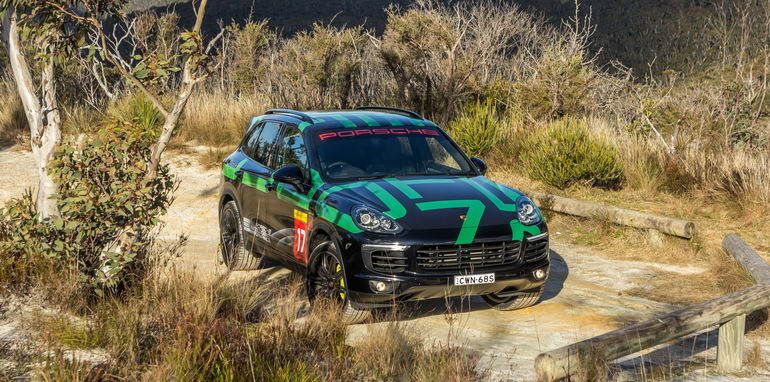
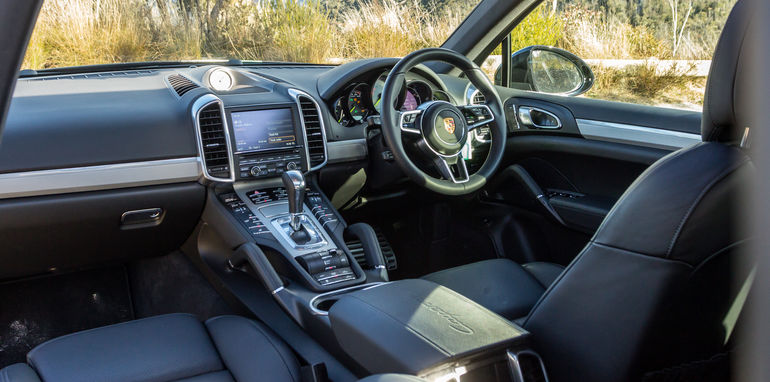
The Cayenne’s darker cockpit (though various optional interior colour schemes are available) felt more foreboding, and somewhat assaulting with its vast array of buttons on the centre console and even the head-lining, though all of the controls become easy to find once you’ve spent a bit of time in the cabin.
The Porsche’s seats are decidedly more supportive up front, with excellent levels of comfort and bolstering. The Range Rover’s seats are flatter and better suited to bulky humans.
Cabin storage up front is good for both cars, with cupholders and loose-item cubbies abounding.
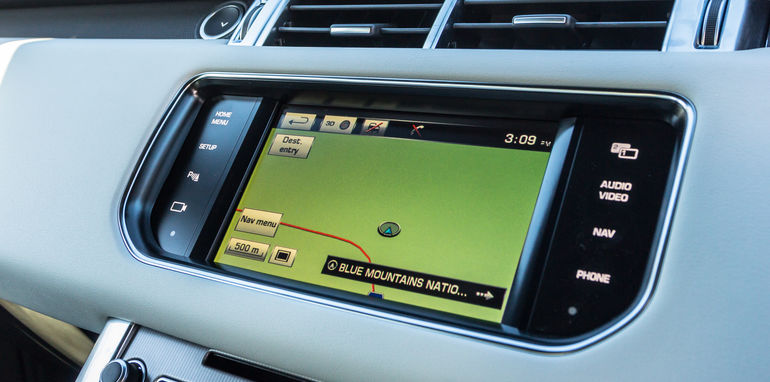
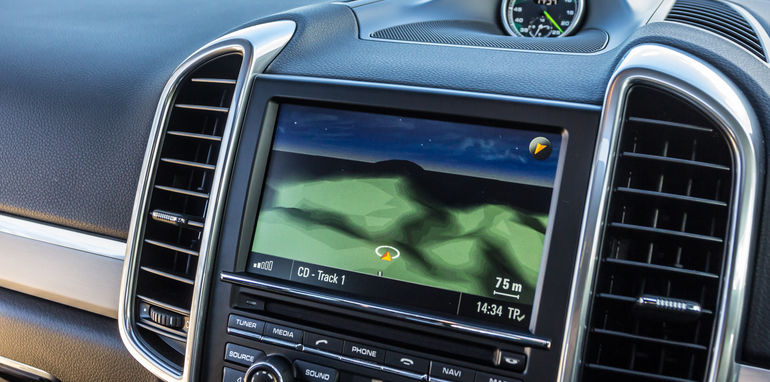
Top: Range Rover Sport; Bottom: Porsche Cayenne
The multimedia systems of both cars leave a lot to be desired. Audi, BMW and Mercedes-Benz still lead these two by quite some margin in terms of the ease of use and the quality of displays, with the blocky text of the Range Rover and the low-res mapping of the Porsche being the particular bugbears.
Rear seat space in both of these trucks is good, with the Range Rover again feeling airier, undoubtedly with its higher-perched stadium-style seating helping out in that regard, as well as its good under-thigh cushioning.
The rear seat of the Range Rover doesn’t slide to allow better boot/leg room like the Porsche, but it does offer a decent amount of recline adjustment for back-seat passengers. We’d prefer to see fabric rather than mesh map-pockets in a car of this class, though.

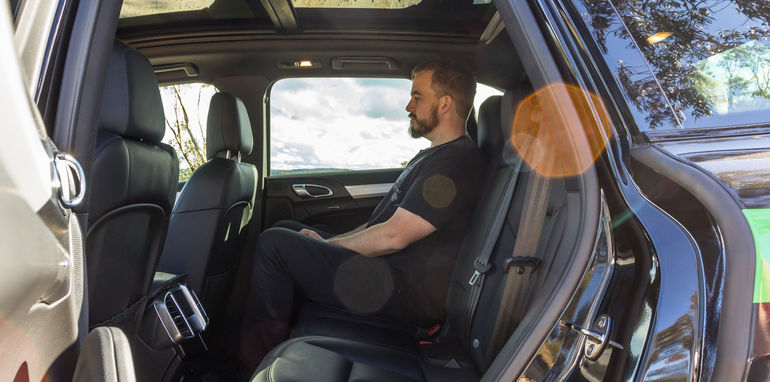
Top: Range Rover Sport; Bottom: Porsche Cayenne
The Porsche feels a little tighter in the back than the Range Rover as you sit lower in to the cabin with your knees up higher, but its seats are more supportive even if it doesn’t feel as lush or plush.
Both cars get a fold-down centre armrest, and both have decent rear seat stowage as well as rear air-vents.
If practicality is a key consideration, the boots of both cars should be suitable for your needs.

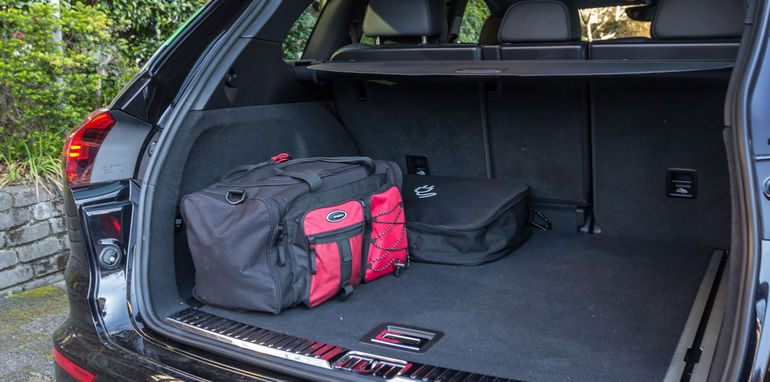
Top: Range Rover Sport; Bottom: Porsche Cayenne
The Porsche has a 580-litre cargo hold with the seats in their rear-most upright position, which expands to 1690L with the seats folded down, though there’s the bag that the electric cable comes in that needs to be contended with when loading. The Range Rover has a bigger boot by the claim (784L, measured to the roof, not the window-line like the Porsche) and is slightly smaller in capacity with the rear seats dropped (1652L).
Under the bonnet
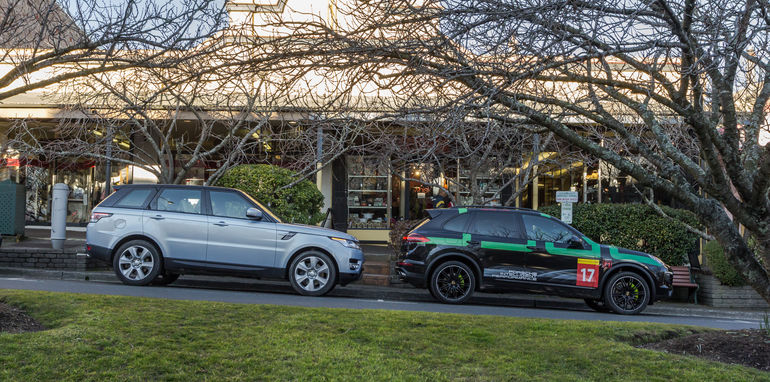
This is the real talking point between these two alternative-propulsion models.
Both are hybrids, to use the term loosely, but they take different approaches to meet their respective ends.
The Porsche combines a 3.0-litre supercharged V6 petrol engine (with maximum power of 245kW) with an electric motor (max. power: 70kW). The two can combine for a maximum power output of 306kW at 5500rpm, while peak torque is rated at 590Nm from 1250-4000rpm.
That powertrain is claimed to be capable of slingshotting the Cayenne from 0-100km/h in 5.9 seconds, while its top speed is said to be 243km/h. In full electric mode it can hit 125km/h before the petrol engine takes over. Not that going that fast is what the car is really all about.
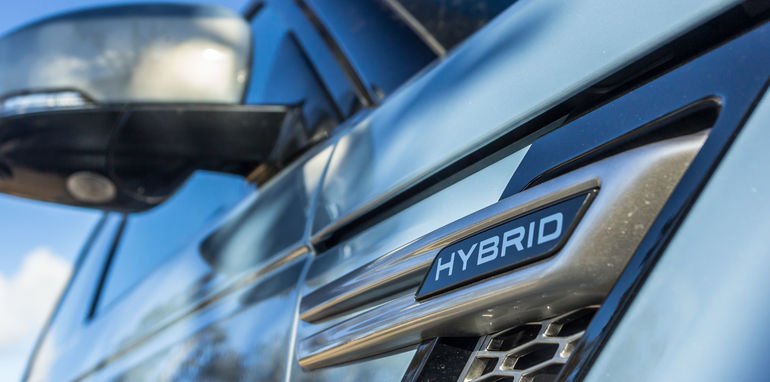
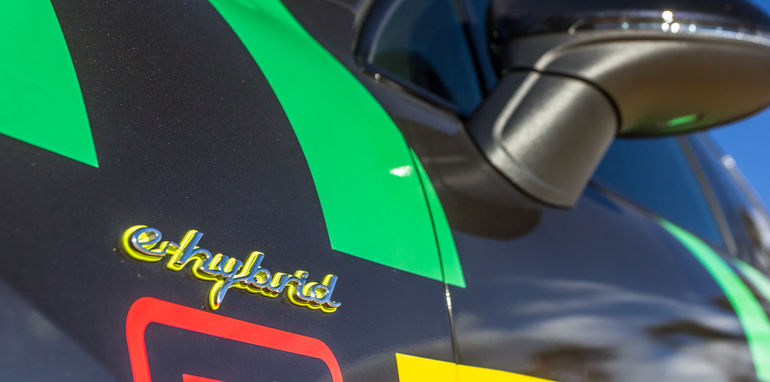
The other important figure for the Porsche is its claimed fuel consumption figure, which is just 3.4 litres per 100km. Of course, once the batteries are depleted (the brand claims range of between 18-36km in everyday situations) that figure can’t be sustained to the same level.
In terms of charging the batteries in the Porsche, the German maker claims it can be filled in as little as 1.2 hours from an industrial powerpoint, or 3.9 hours from a domestic plug. Or you can use the petrol engine to charge up the batteries on the move using the Charge mode, while the car will also collect and store kinetic energy
The Range Rover’s powertrain combines the brand’s SDV6 turbo diesel six-cylinder engine with an electric motor.
The resulting power outputs â€" as you’d expect of a diesel drivetrain when compared to a petrol â€" seeing a lower maximum power level 260kW, while the torque output exceeds that of the Porsche at 700Nm.
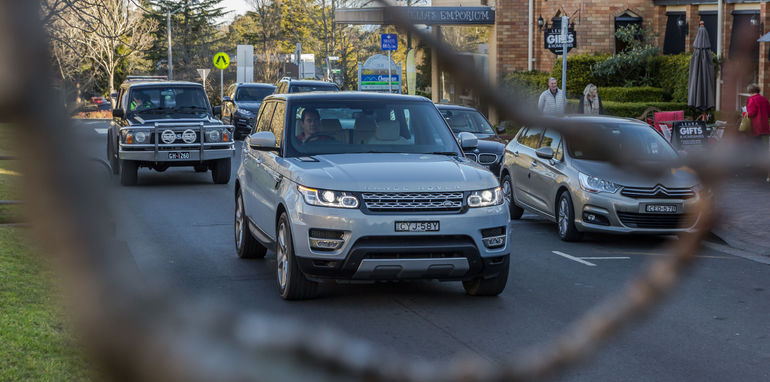
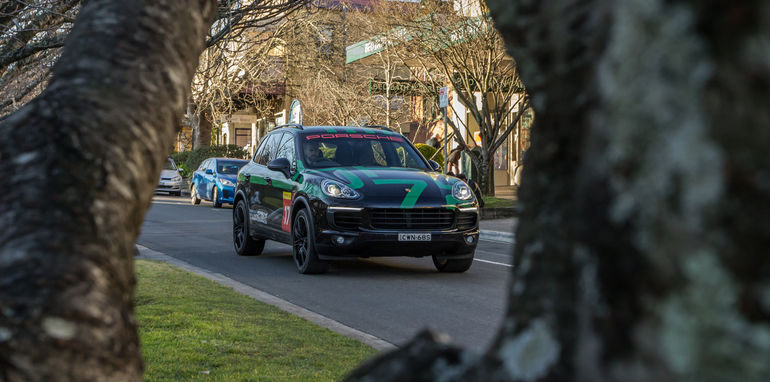
There’s no plug-in capability for the Range Rover â€" instead, it makes use of an 35kW/175Nm electric motor in the transmission, which can use kinetic energy stored by the braking system.
As this isn’t nearly as progressive a hybrid as that seen in the Porsche, it’s no surprise the electric driving range is considerably lower â€" Range Rover claims the Sport Hybrid can travel 1.6km on battery power.
Further, the fuel consumption claim of the Range Rover is nowhere near as headline-grabbing as that of the Porsche, obviously because it can’t travel as far without using fossil fuel. The claim is 6.2L/100km, which is only a fractional improvement over the standard SDV6 model that claims usage of 7.0L/100km.
It is quicker than the regular diesel SDV6 model, though, with a claimed 0-100km/h sprint time of 6.7 seconds (compared to 7.2sec), though it’s clear the Porsche is the performance pick.
On the road
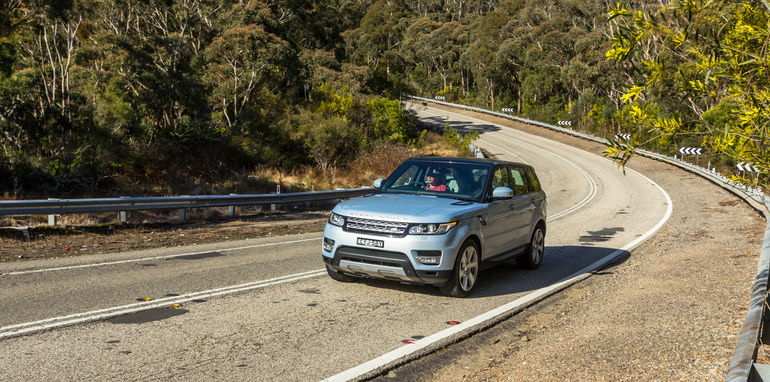
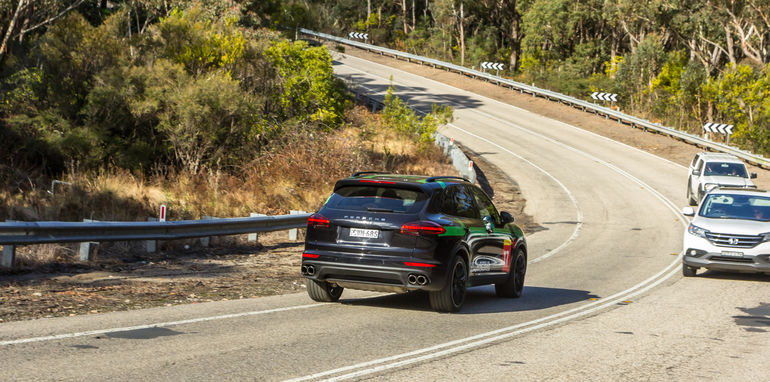
During our test we covered two test loops â€" an urban one in Penrith and surrounding suburbs, and a longer highway loop out along Bells Line of Road towards Lithgow and back down through the Blue Mountains on the Great Western Highway.
The idea of the urban test was to see just how much each vehicle would run on electricity before calling its engine in to action.
The Porsche allows the driver a less tip-toed experience than the Range Rover, with the German vehicle’s drive system proving more ready to rely on electricity rather than petrol around town â€" unless you push the throttle hard to overtake or sprint from the lights.
The eight-speed automatic in the Porsche doesn’t behave like some regular EVs or hybrids with continuously variable transmission (CVT) autos. The shifts are noticeable â€" at times abrupt â€" and it holds on to ratios longer than you’d probably expect.
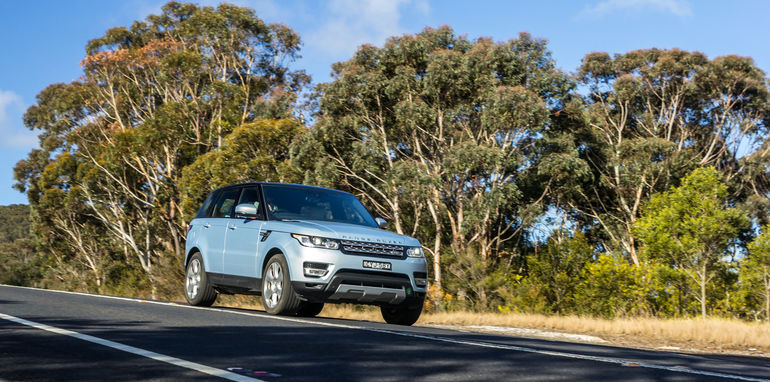
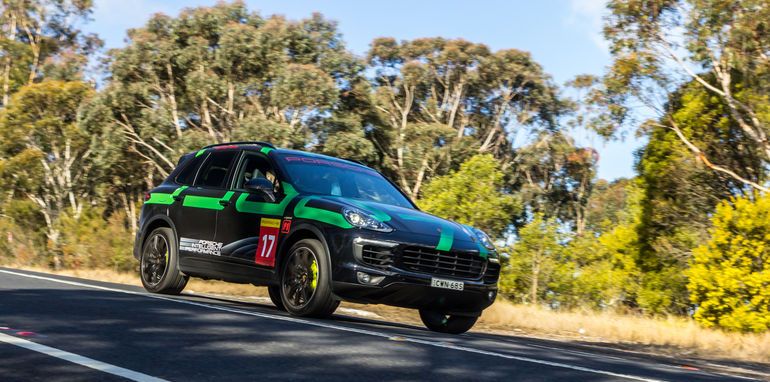
You won’t see the rev needle move, but the speedo will move fast if you’re careful with balancing your right-foot pressure, though we were aiming to drive fairly conservatively.
With a battery range of between 18 and 30 kilometres, we expected to run out of electricity during our 33.6km loop â€" and we did, smack bang in the middle of that range.
The indicated range at the beginning of the loop was 24km, and we managed 23.9km. For the eco-brainiacs out there, the weather was cool (7°C) with dry road conditions.
And when the petrol engine finally kicked in, you could hear it (it’s noisy) and feel it (it vibrates, where batteries don’t). While the switch between drive modes was quick and the supercharged engine was pokey from low in the rev range, that engine noise intrusion could be wearing.
The result at the end of the first loop was a trip computer display of 2.5 litres per 100km. But that figure has to rise over distance, because the batteries will continually deplete once they gather a bit of extra charge (unless you use Charge mode, which saves up juice for urban duties â€" that would be wise if you’re out of town).
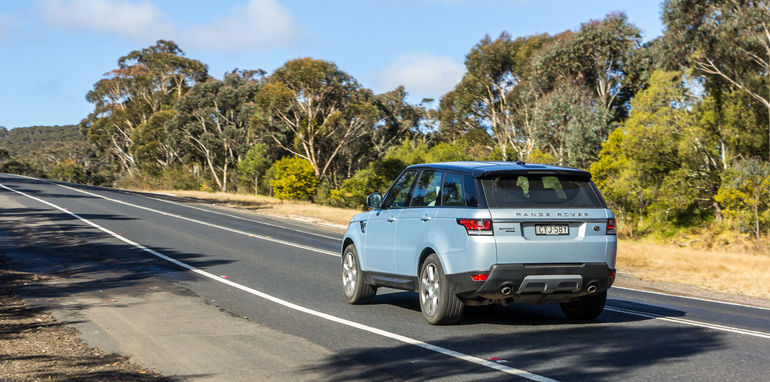
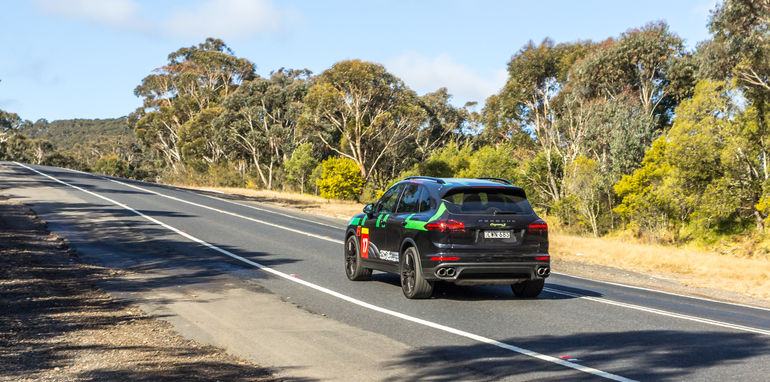
The Range Rover was a decidedly different experience.
It will use electric power when possible, but there’s nowhere near as much of an emphasis on running around in EV mode, try as you might to minimise the use of the diesel engine.
It isn’t the smoothest transition between the two drive modes. There’s lag when you’re tootling around town and the drivetrain switches to diesel, and then there’s turbo lag to contend with.
As is the case in the Porsche â€" which has a slightly louder whirr to its electric motor â€" the Rangie is near-silent when you’re running in EV mode, with just the roar of the tyres and the occasional techno-burp from the car’s computers.
It isn’t as noticeable in the way it shifts ratios, either, with the big Brit offering smooth progress in the urban jungle.
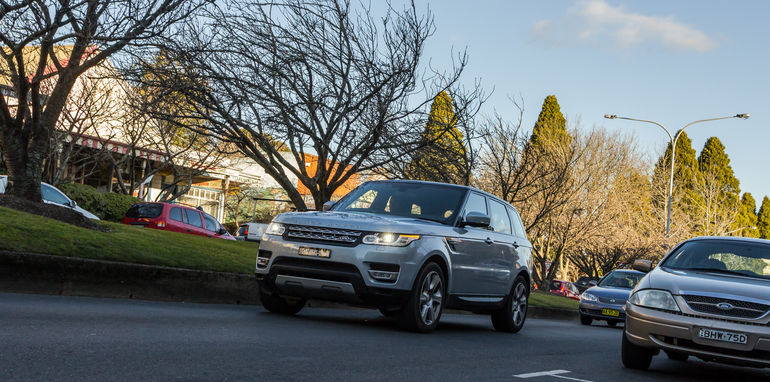
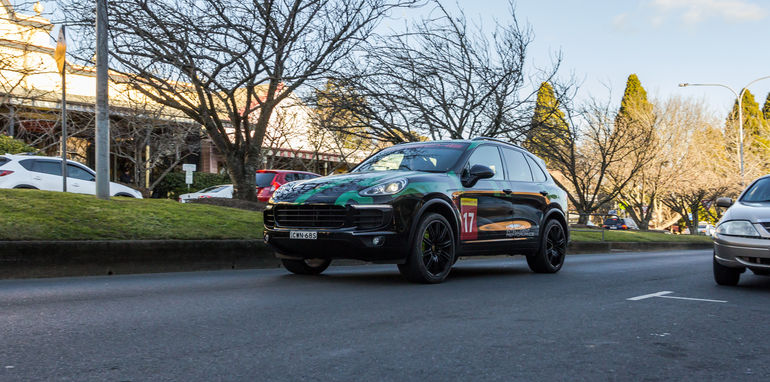
While going is important, so is stopping. And while both vehicles managed to halt their bulk respectably when required, the pedal feel in both vehicles was poor â€" the Porsche’s were initially quite wooden, then suddenly grabby, where the Range Rover’s were spongey and didn’t offer much in the way of driver confidence.
The telling figure for the Range Rover for loop one was 6.4L/100km, which was significantly higher than the Porsche (displayed average 2.9L/100km) if still decent given the size and nature of the car.
On the open road, things evened up considerably. In fact, the lead switched, at least in terms of fuel consumption, because the Porsche needed to either use its petrol engine as either a generator (which isn’t advisable for long-distance driving) or as an actual engine. As such, its fuel use reading rose steadily.
In terms of dynamics and comfort on the road, these two will appeal to opposing buyers.
The Range Rover is softer and more comfortable and supple when it comes to dealing with hard bumps, with its standard air suspension with height adjustment for off-roading giving buyers some extra peace of mind.
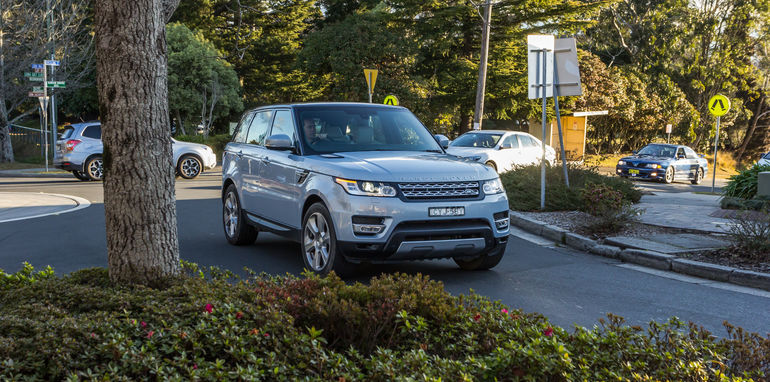
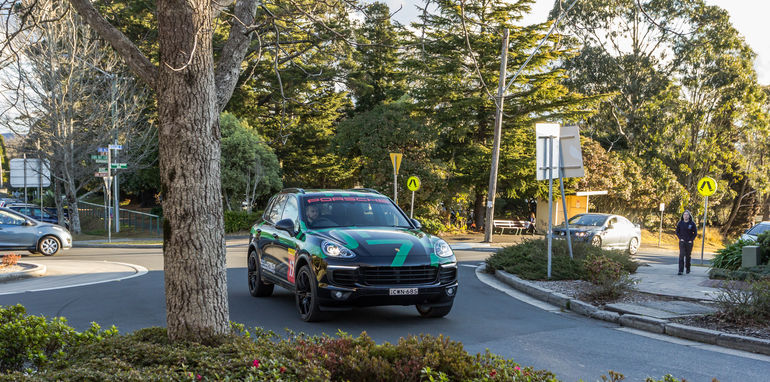
Porsche also offers its Active Suspension Management air suspension system as standard on the S E-Hybrid, although it doesn’t offer as comfortable or compliant a ride as its rival, picking up more of the small inconsistencies on the road and transmitting them into the cabin around town. Both, however, deal with big bumps and speed-humps well.
There’s little in it in terms of weight between the two. In short, they’re both pretty heavy (Range Rover: 2372kg; Porsche: 2350kg).
The Porsche feels more adept at hard cornering, with less body roll than the Range Rover and ultimately more grip with the going gets twisty. However, we noted that over rough corners the body of the Porsche could wobble, upsetting the balance of the car.
The Range Rover isn’t embarrassed by the Porsche in terms of dynamic prowess, but it is much more comfortable ambling along back roads than trying to set point-to-point speed records. It doesn’t get out of shape as much over mid-corner bumps, either.
The steering of the Range Rover is heavier at high speeds than that of the Porsche, with the Cayenne offering a lighter, more rapid rack that rewards the driver with better accuracy and easier adjustment on the move, although there was some inconsistency to the resistance of the system at times, particularly around town.
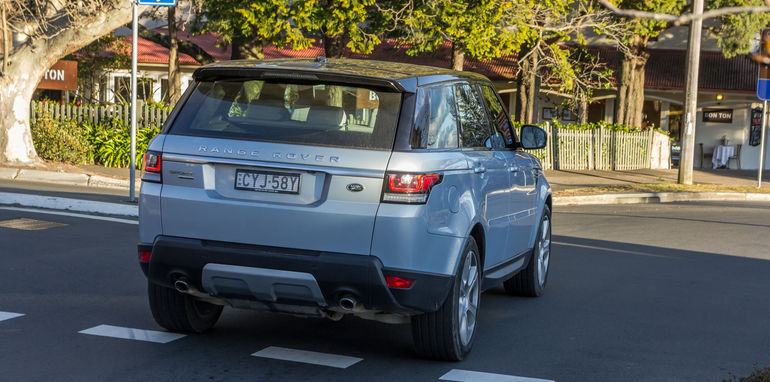
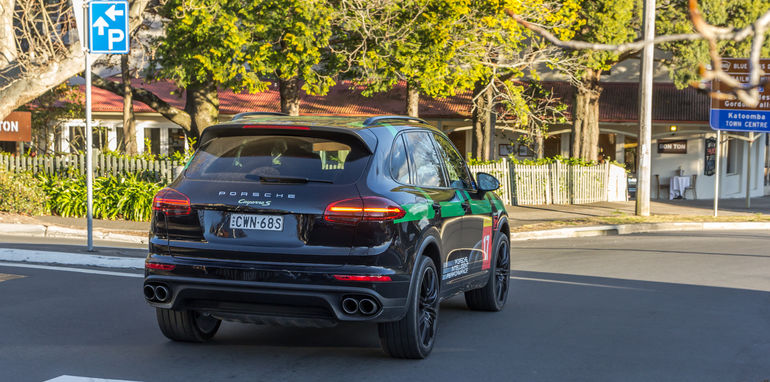
The Range Rover counters by being considerably quieter, most notably on the open road with its impressive insulation over coarse-chip road surfaces.
Because these two are supposed to be ultra-efficient â€" the Porsche moreso than the Range Rover â€" it was something of a shock to see their respective combined fuel use totals at the end of our test loops.
The Porsche â€" which claims 3.5L/100km â€" displayed consumption of 9.4L/100km at the conclusion of our testing.
The Range Rover was also higher than its claim â€" which is 6.4L/100km â€" but not to as huge a degree with displayed consumption of 8.2L/100km.
Ownership
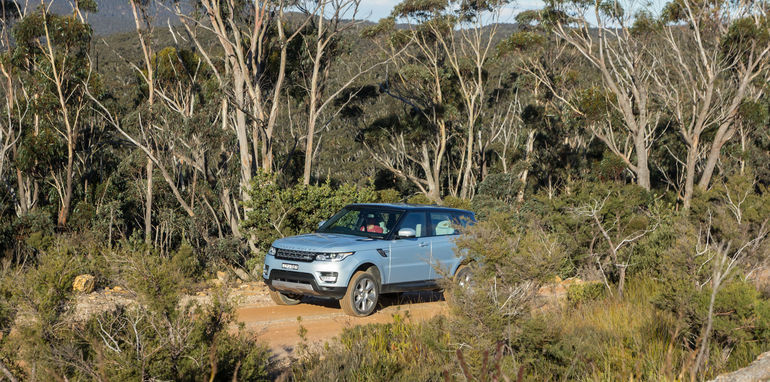
If you’re after long-term capped-price service plans, you’re in the wrong place. Neither Porsche nor Range Rover offer anything along those lines, but both have three-year, unlimited kilometre warranty programs with roadside assistance.
In terms of resale â€" because hybrids are notorious for losing value fast â€" it’s worth noting that industry experts Glass’s Guide indicate that after 36 months or 40,000km, the Porsche would be worth about 62 per cent of the initial purchase price, while the Range Rover would be worth 61 per cent.
In terms of running costs on a daily basis, that’ll depend entirely on your driving commitments.
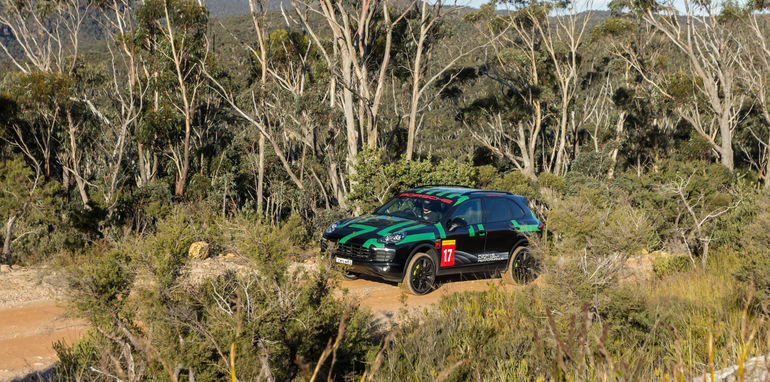
You can bank on using about 8.0L/100km in day-to-day driving in the Range Rover, whether you’re doing 20km or 200km per day. But in the Porsche you’re going to be better off if you are more towards the former â€" you could use zero petrol â€" but likely a fair bit worse off if you do a lot more long-distance driving, where you should expect closer to 10L/100km.
Verdict
To be frank, there are plenty of reasons not to buy either of these hybrid SUVs.
Both have more-affordable, conventionally-powered offerings in their ranges that would be more enjoyable to drive on a daily basis. Further, both are too expensive and ask too big a premium over such models.
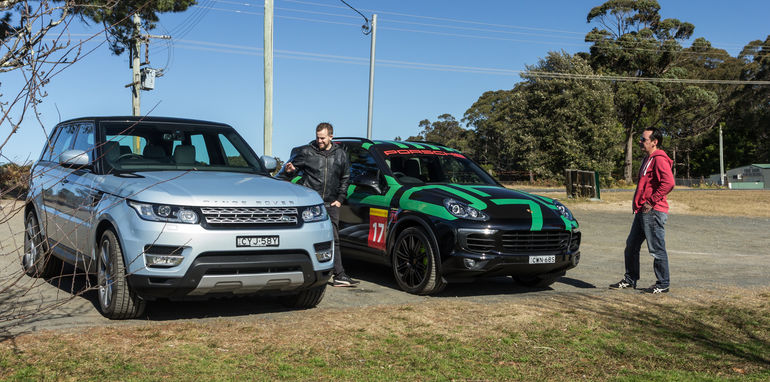
The most affordable Porsche Cayenne, the Diesel, is a sweet thing, and so are the more basic variants in the Range Rover Sport line-up. As such, if you don’t need to buy a hybrid luxury SUV, we’d suggest you don’t.
But if you’re hell-bent on doing your bit for the betterment of the world (or even just be seen to be doing so), or if it’s part of a contractual obligation for your lease that you must drive a vehicle with hybrid technology, then it will be hard to choose which is the better option.
The Porsche is more involving and will be more enticing to those who want their SUV to be something of an adventure in itself. The electric driving range will undoubtedly appeal to those who travel a short distance to and from work, and if you get out of town regularly it will be more rewarding.
That said, the Range Rover is more comfortable and feels more prestigious than the Porsche. It is a likeable cruiser, and while it’s not as sporty and not as green around town as the Porsche, it does feel more like a luxury SUV should. And for that reason, it takes a narrow win.
Click the Photos tab above for more images by Christian Barbeitos.
Thanks to Wollemi Wilderness Retreat for allowing us to spend some time taking photos on their property. If you like the look of the funky Love Tee Pee, check out their website: http://www.wollemiwilderness.com.au/
Comments
Post a Comment